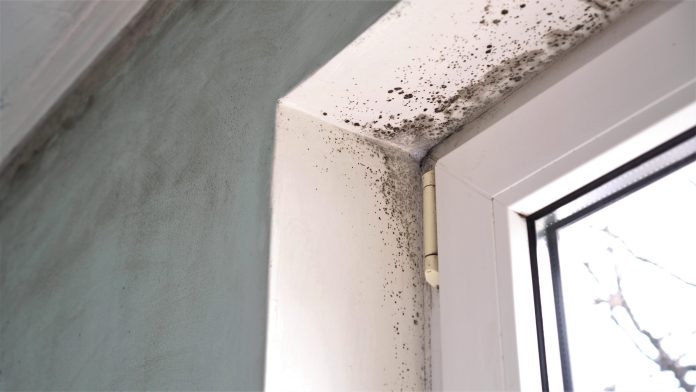Timely, accurate and personalised data is vital to help solve damp and mould in social housing says Civica’s Justin Fisher
We have long known there is a notable problem with damp and mould in the UK’s social housing stock. But the evidence has been brought into sharper focus in a new report from the Regulator of Social Housing (RSH), Damp & Mould in Social Housing – Learning the Lessons.
Driven by the tragic death of toddler Awaab Ishak and the subsequent coroner’s report, which found damp and mould in his home were responsible for his death, the new report highlights the importance of landlords dealing effectively with damp and mould – and the potential consequences of not doing so.
Consequently, the regulator contacted all housing bodies to provide: their approach to assessing the extent of damp and mould in social housing; their most recent assessment; actions taken; and how damp and mould cases are dealt with. This showed around 6% of social housing stock in England has some form of notable to severe dampness.
Assessing properties is traditionally carried out in rolling five-year stock condition surveys, which RSH chief executive Fiona Macgregor has indicated may no longer be fit for purpose. Speaking at the recent Social Housing Finance Conference, she stressed the need for better data across the board: “If your starting point is already quite out of date… and you’re not using other sources of data to feed into that overall picture… it may no longer be enough.”
Be on the front foot and know your data
The RSH has now earmarked those housing associations who’ve given a poor response as not good enough. With the strengthening in consumer regulation expected in the autumn, the regulator will have the power to reduce the governance rating of an organisation, which will put housing associations at risk of continuing.
One thing we’re championing at Civica is changing the approach to data gathering in social housing. For example, internet of things (IoT) technology can play a big part in solving this issue. It allows us to build that real-time picture far more efficiently than waiting for a five-year stock cycle report.
The RSH report indicated that some of the best responses received showed landlords using other data sources to feed into the overall picture of stock condition, including responsive repair requests and complaints. They also had accurate and up-to-date information on their tenants, including potential vulnerabilities and language requirements – for instance, through undertaking a regular tenant census.
This timeliness of data is crucial. Working with our IoT partner Daizy.
means our customers can receive that up-to-the-minute assessment of a property. Humidity and temperature sensors can show an instant picture, with assessments as frequently as needed. Combining IoT monitoring with a complete housing system which also registers repairs and complaints, is a great advantage as all the data is in one place.
A more engaged, greener future
The UK government’s Future Homes Standard 2025 set out that an average home built will have 75%-80% less carbon emissions than currently. This means a new home built to the standard might have a heat pump, triple glazing and standards for walls, floors and roofs that significantly limit heat loss.
This will lead to the phasing out of gas boilers and an uptake in heat pump installation. New heat pumps are likely to have built-in technology such as humidity and damp monitors, plus internal breakdown assessments to make sure any issues are reported instantly.
There’s also an intrinsic link between making properties more energy efficient and removing carbon and reducing damp and mould in social housing, as more efficient heating and better insulation will lessen the risk.
It’s also crucial to have up-to-date information on residents and open means of communication. Housing systems should have the capability to operate different language requirements, as well as the potential to spot and monitor vulnerabilities.
Switchee, who we are also working with, enables smart home technology such as small screens in properties in which housing associations can push messages, including questions about their property or resident surveys – reporting a 90% response rate within a day. It’s also been shown to improve first-time access to properties by breaking down any potential resident or language barriers first.
Landlords need to do more to stop damp and mould in social housing
There’s no doubt that those landlords with minimal damp and mould issues will be those that manage their data well and share it accurately across their organisation. Through the smart use of technology to proactively monitor and stop damp and mould in social housing before it happens, we’ll be protecting both residents and properties at the same time.
This will both save much-needed social housing funds in the long run while providing the safe, damp- and mould-free social housing that people really deserve.
Justin Fisher

Product manager, housing
Civica
Tel: +44 (0) 3333 214 914



![[VIDEO] Making DorTrak reports easy to read with Fireco Inspecting fire doors at Fireco, firedoor technology, 2023](https://www.pbctoday.co.uk/news/wp-content/uploads/2024/04/JPZ_2364-web-218x150.jpg)
![[VIDEO] Re-flow Field Management review by Traffic Management Installations When TMI began subcontracting for councils and government bodies, they wanted to present their site reporting in a more professional manner](https://www.pbctoday.co.uk/news/wp-content/uploads/2025/03/TMI-Media-1-218x150.png)










You are overlooking that damp is from water. Water may be for example from floods, escapes of water, penetrating and rising as well as envirnmental. Its disappointing to keep reading that the focus of many is still on environmental issues when the other types of water damage can contribute or lead to an environmental issue. “Internet of things (IoT) technology” or more transparently, remote monitoring can be very useful if you understand what you are looking at or remember to look, but environmental issues such as mould growth arise constantly as a result of water damage and seem to be overlooked by many. What does an occupier do when the landlord will not or does not want to spend the money on putting right issues – a problem I see all the time?